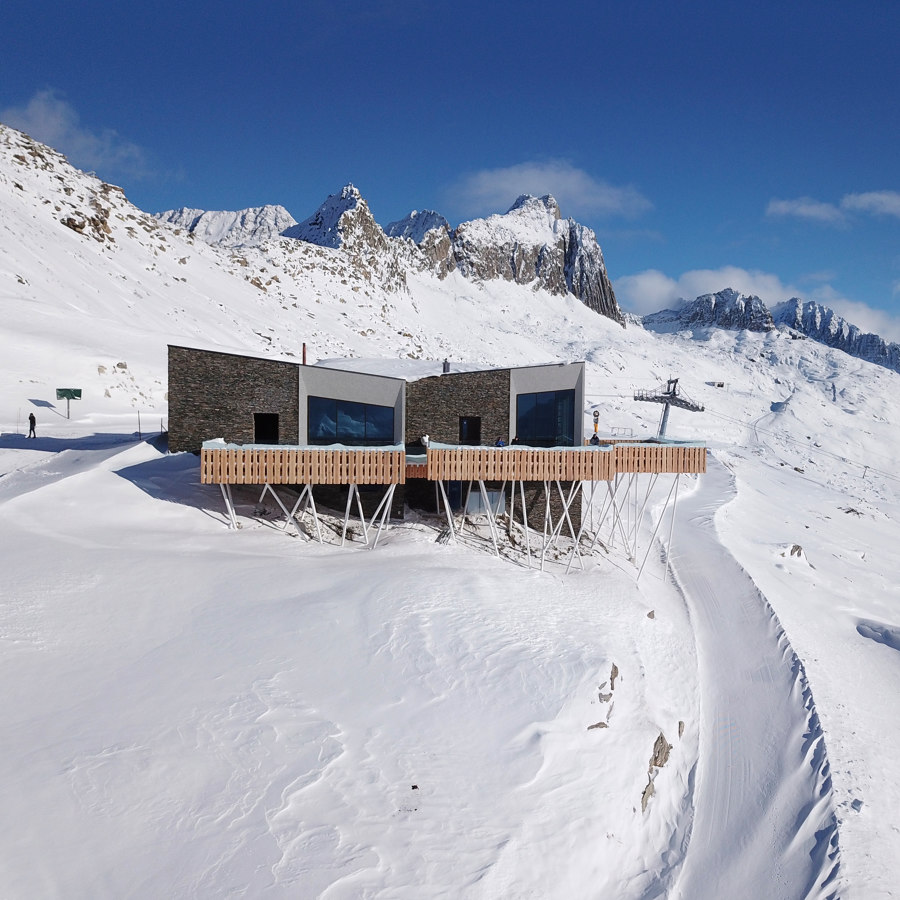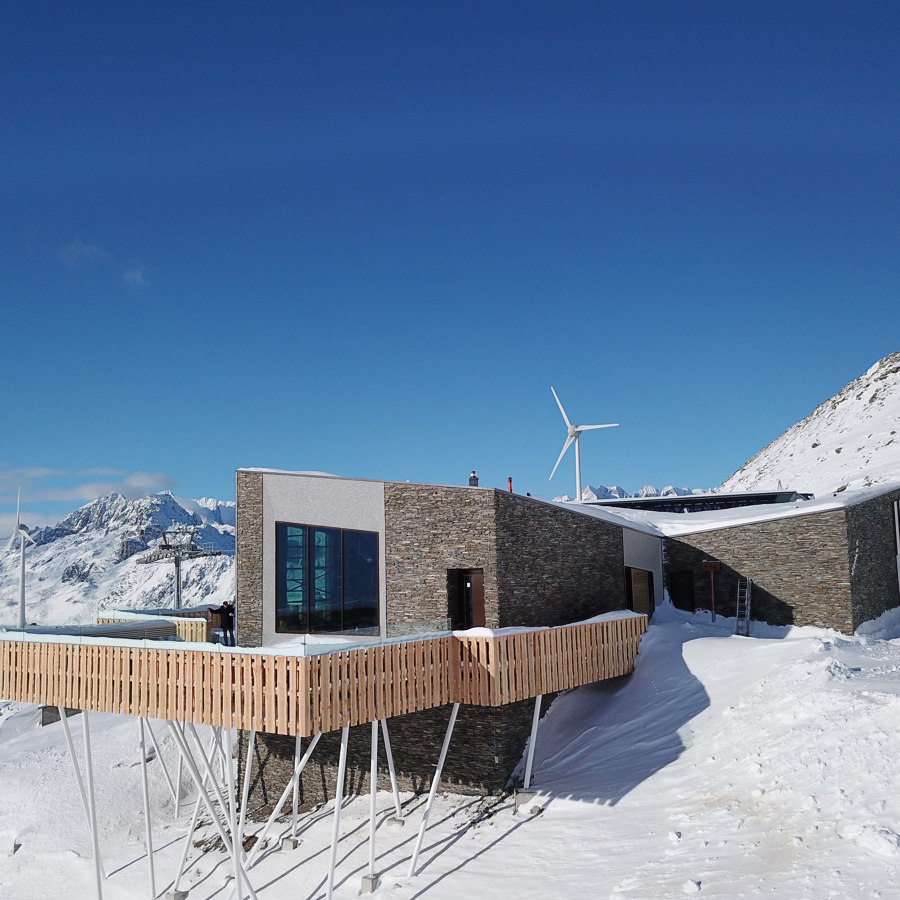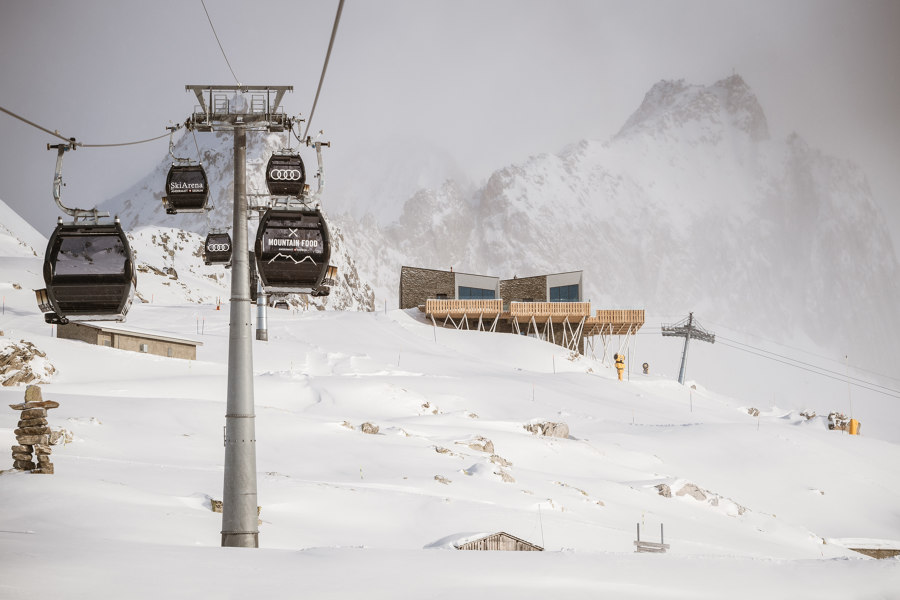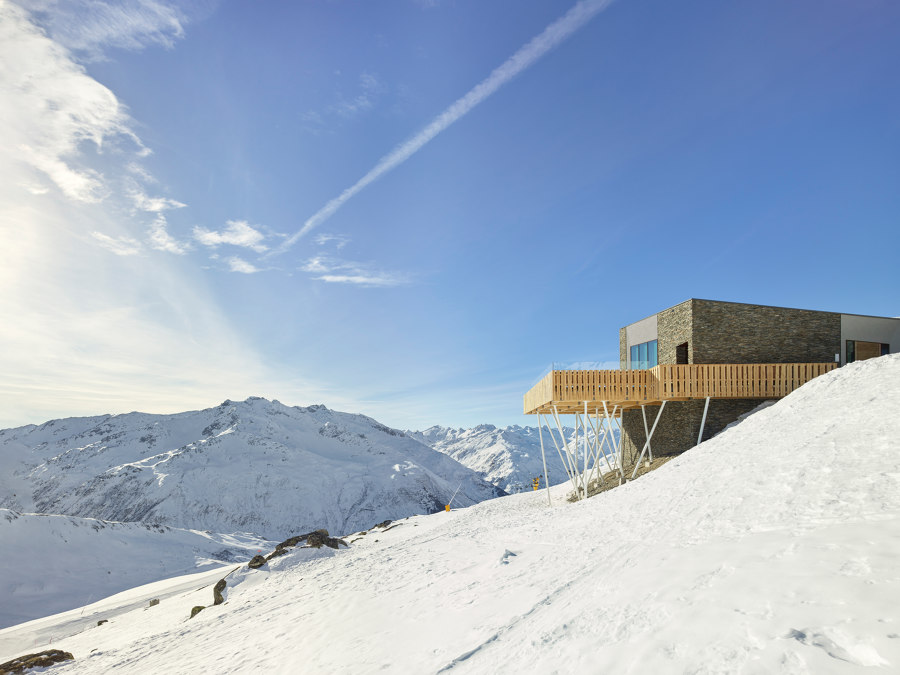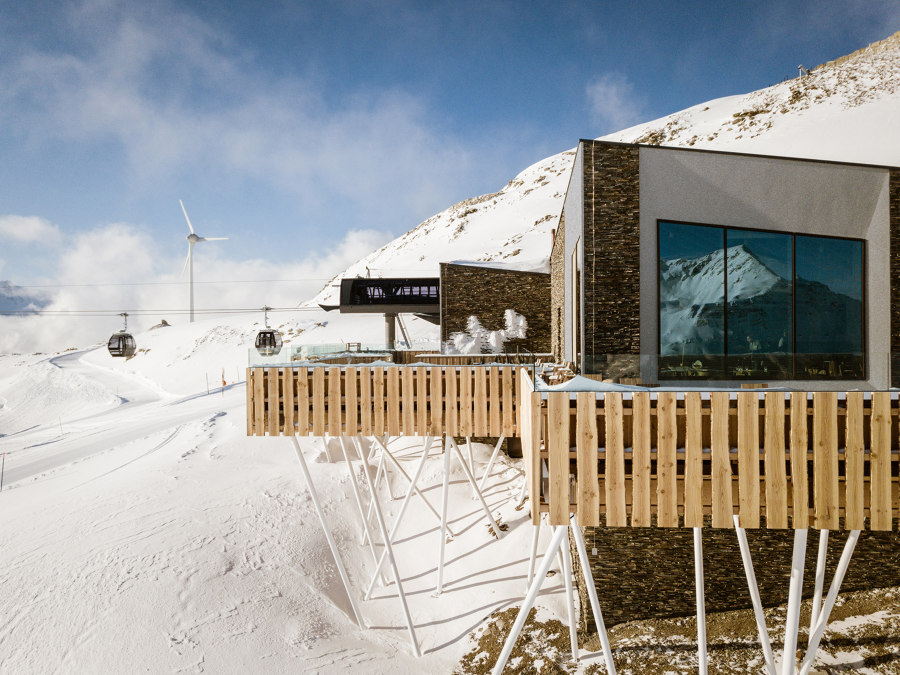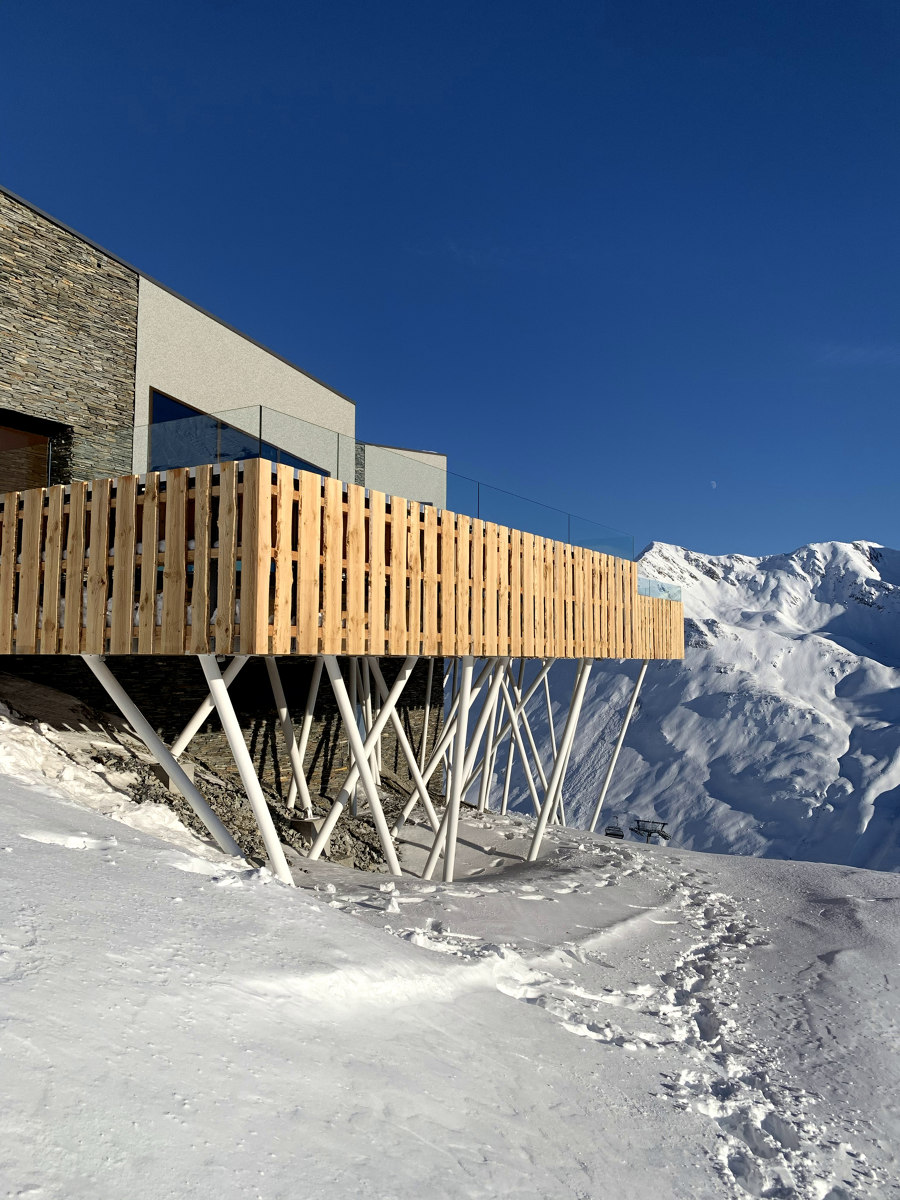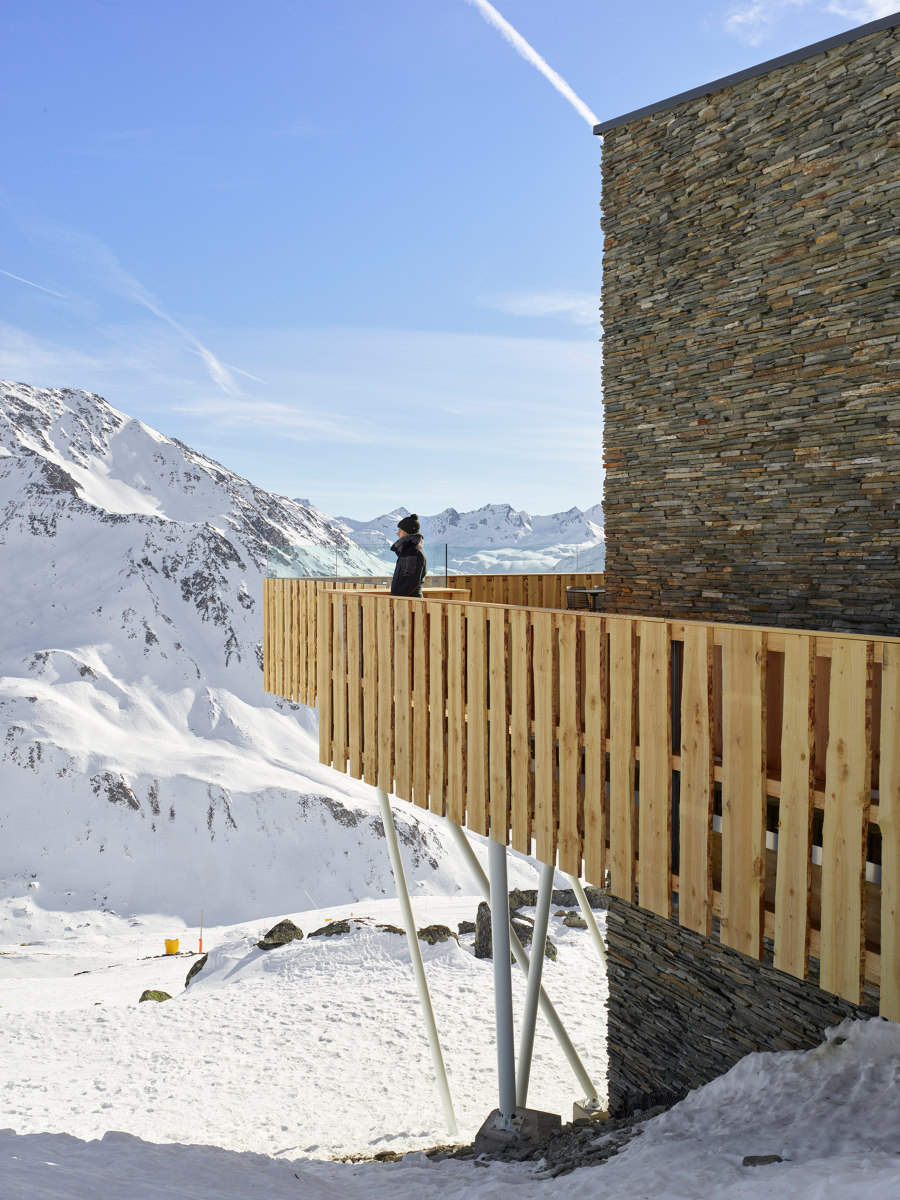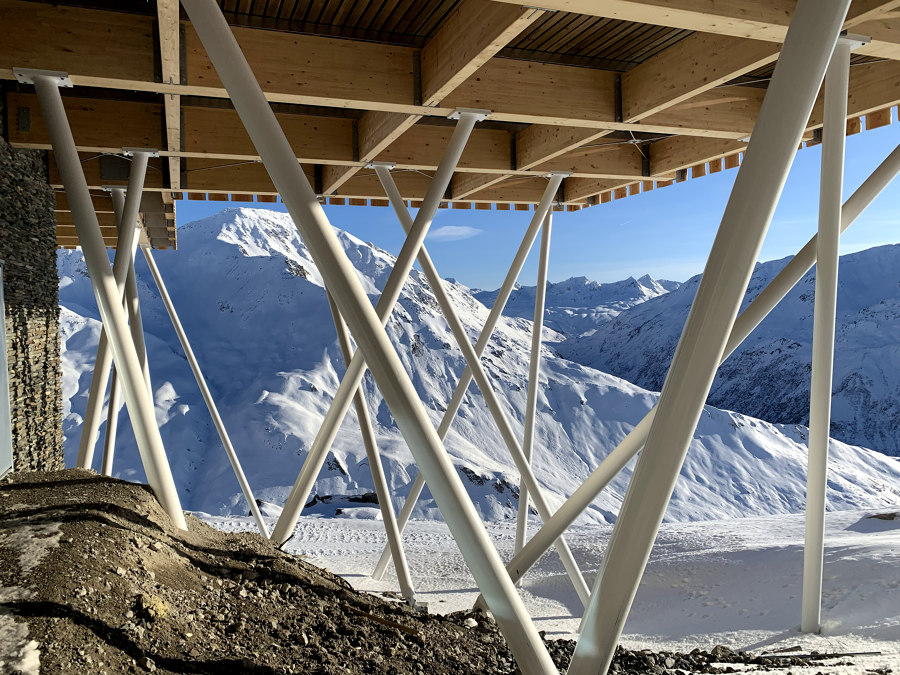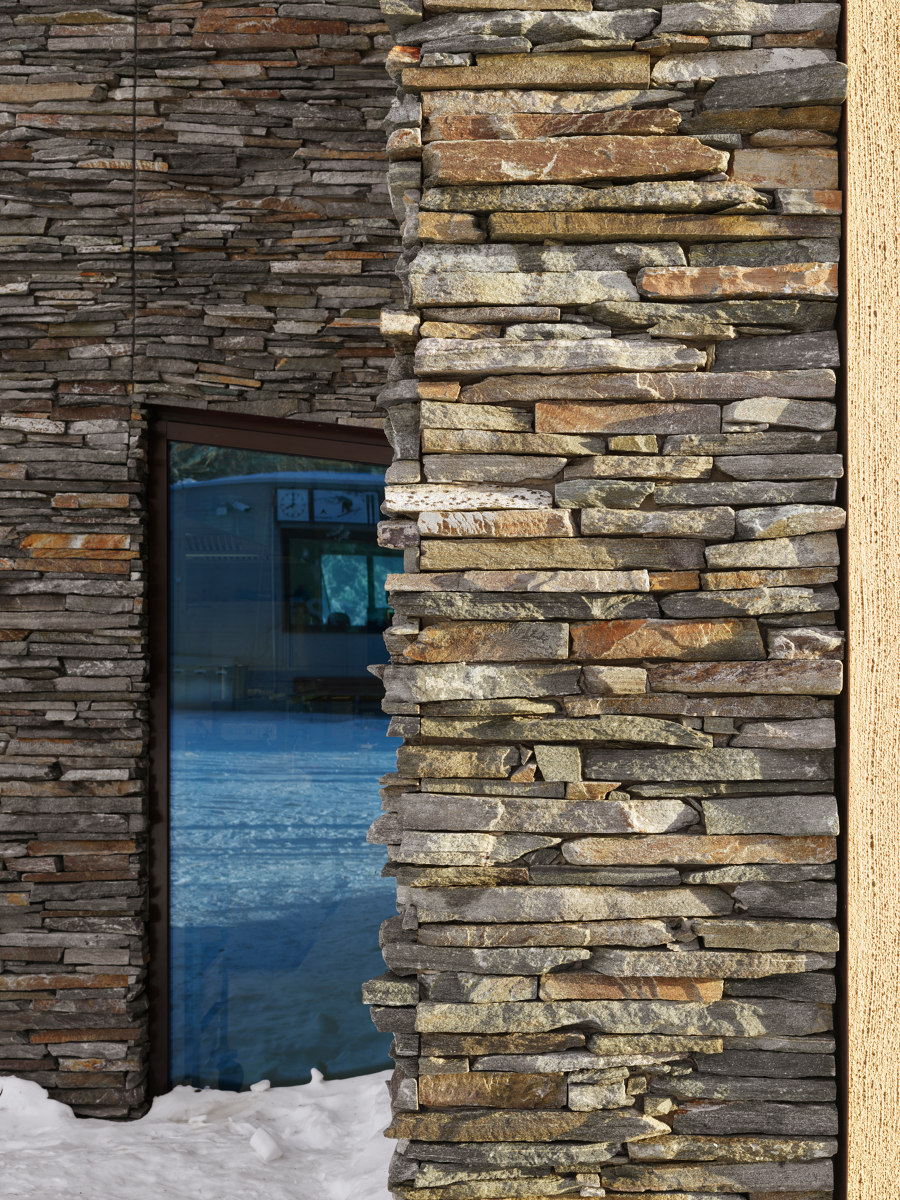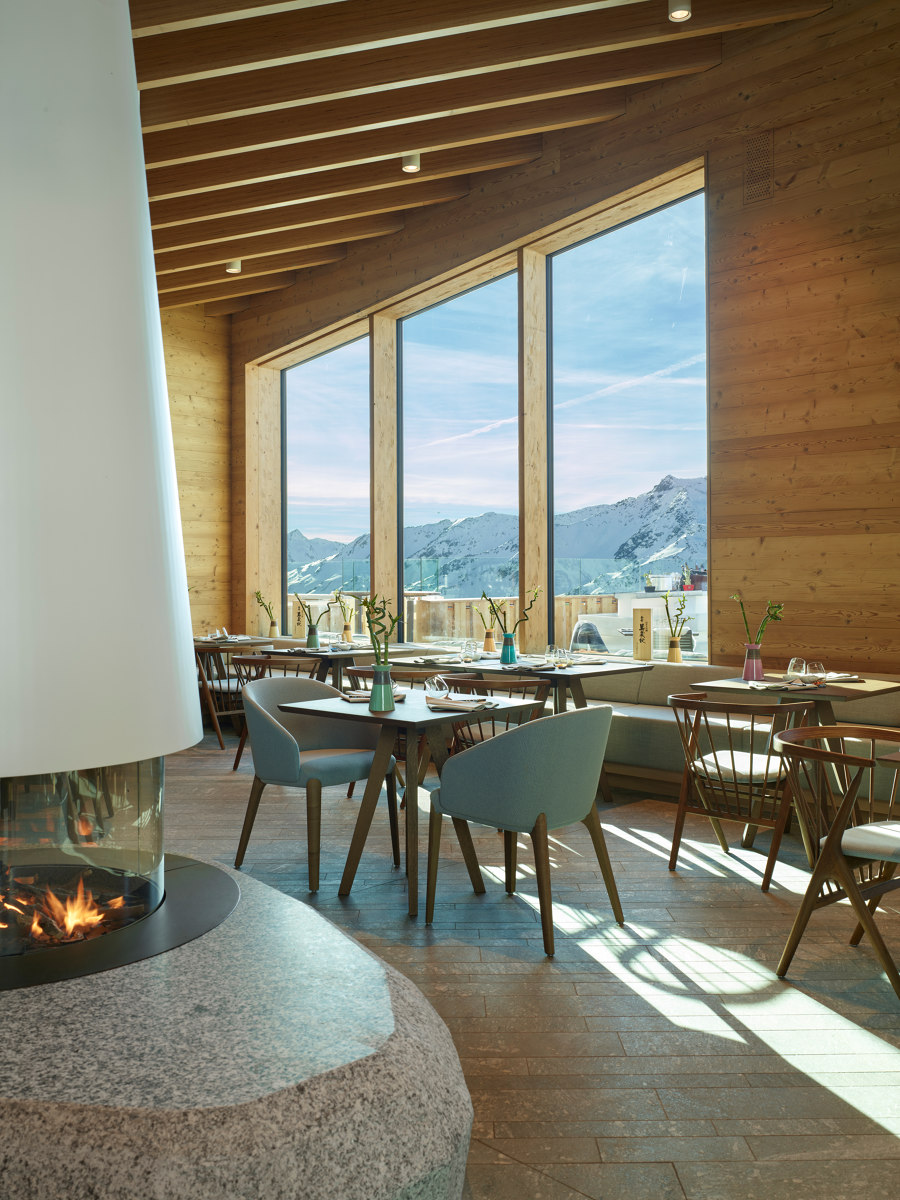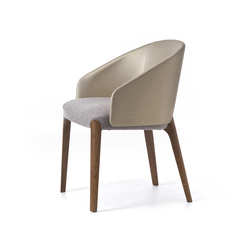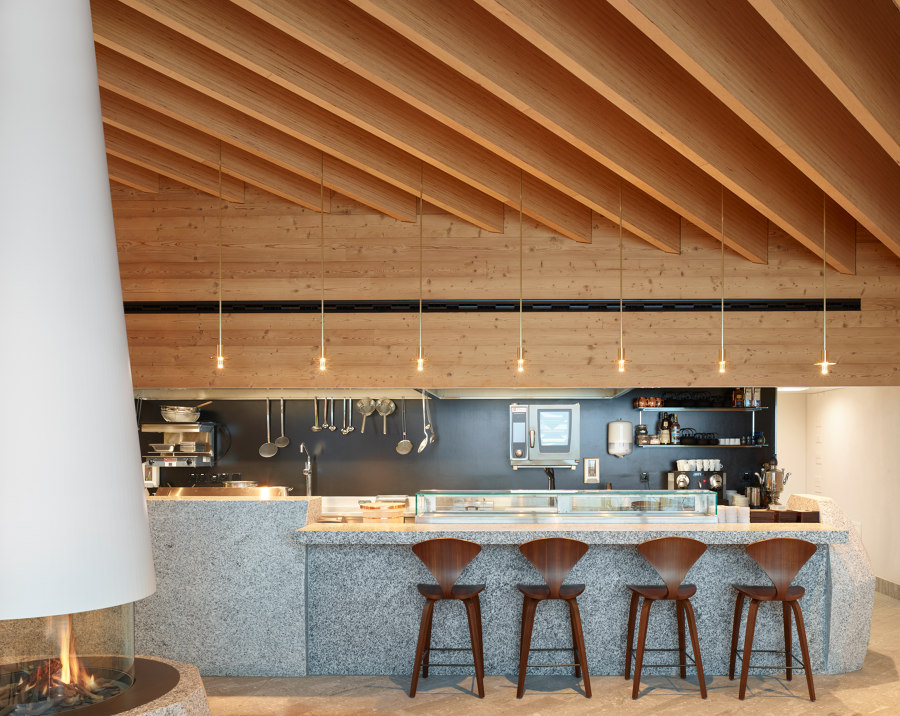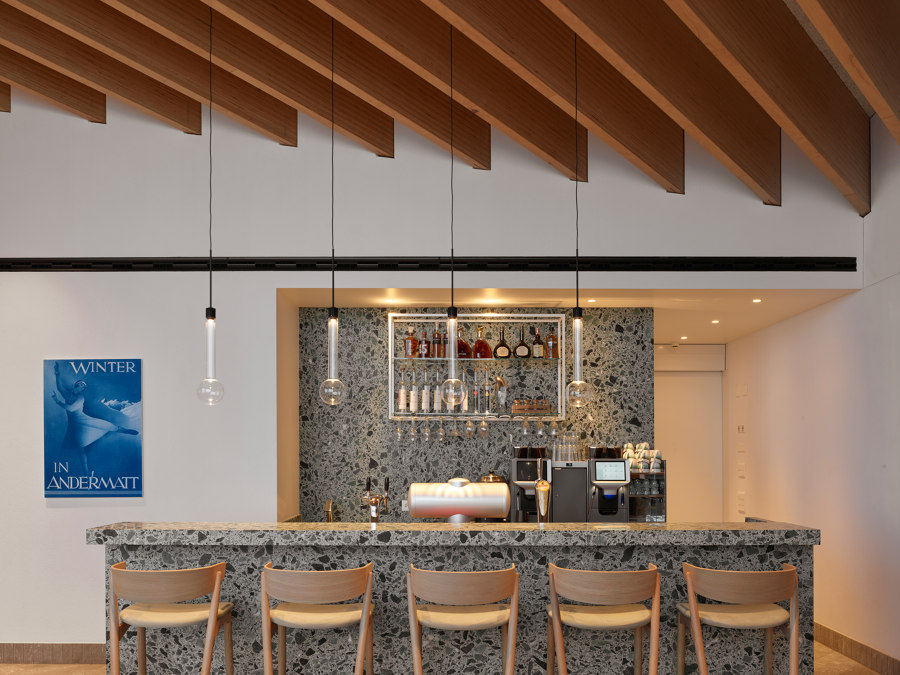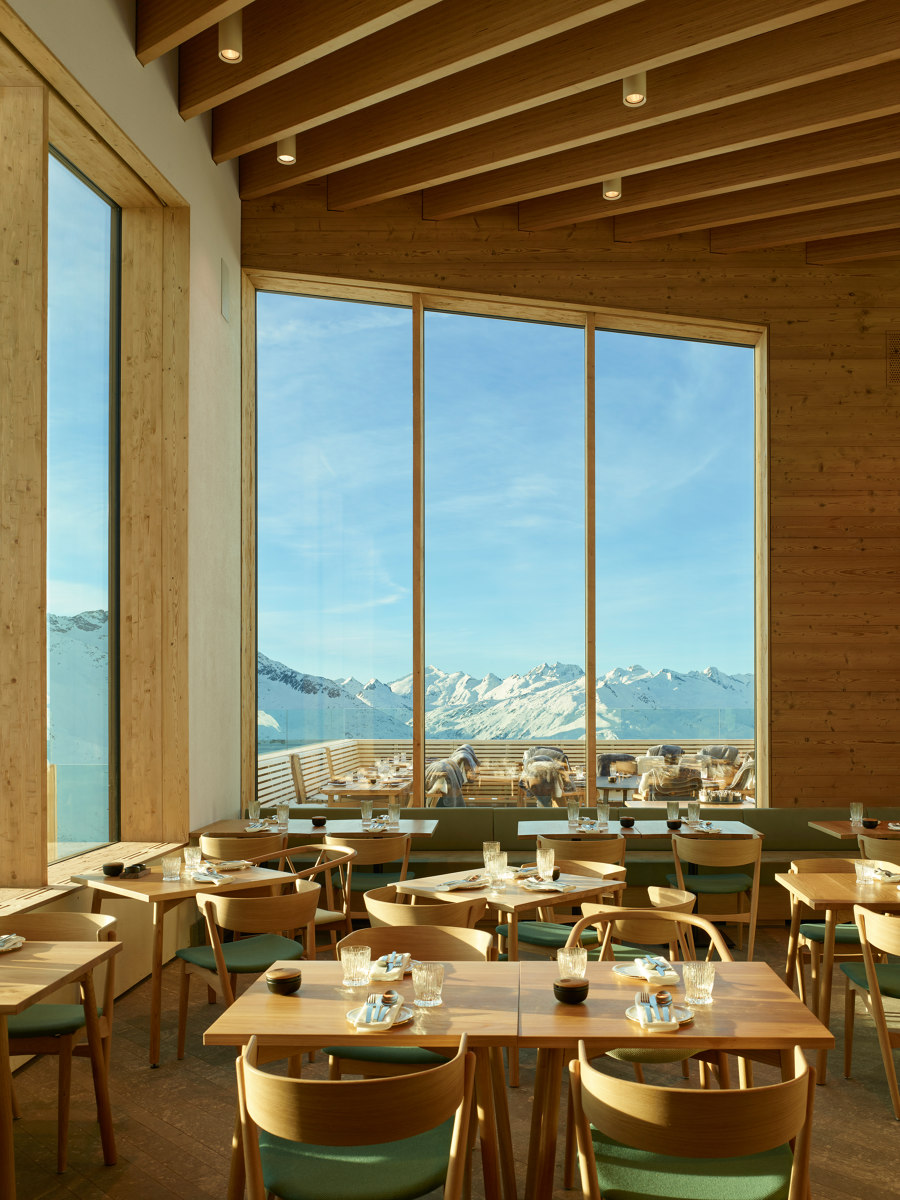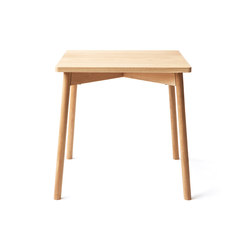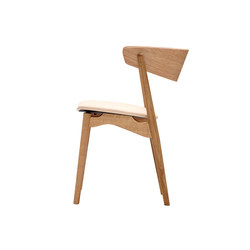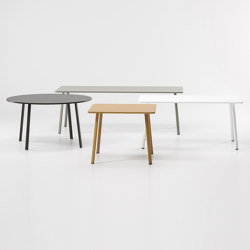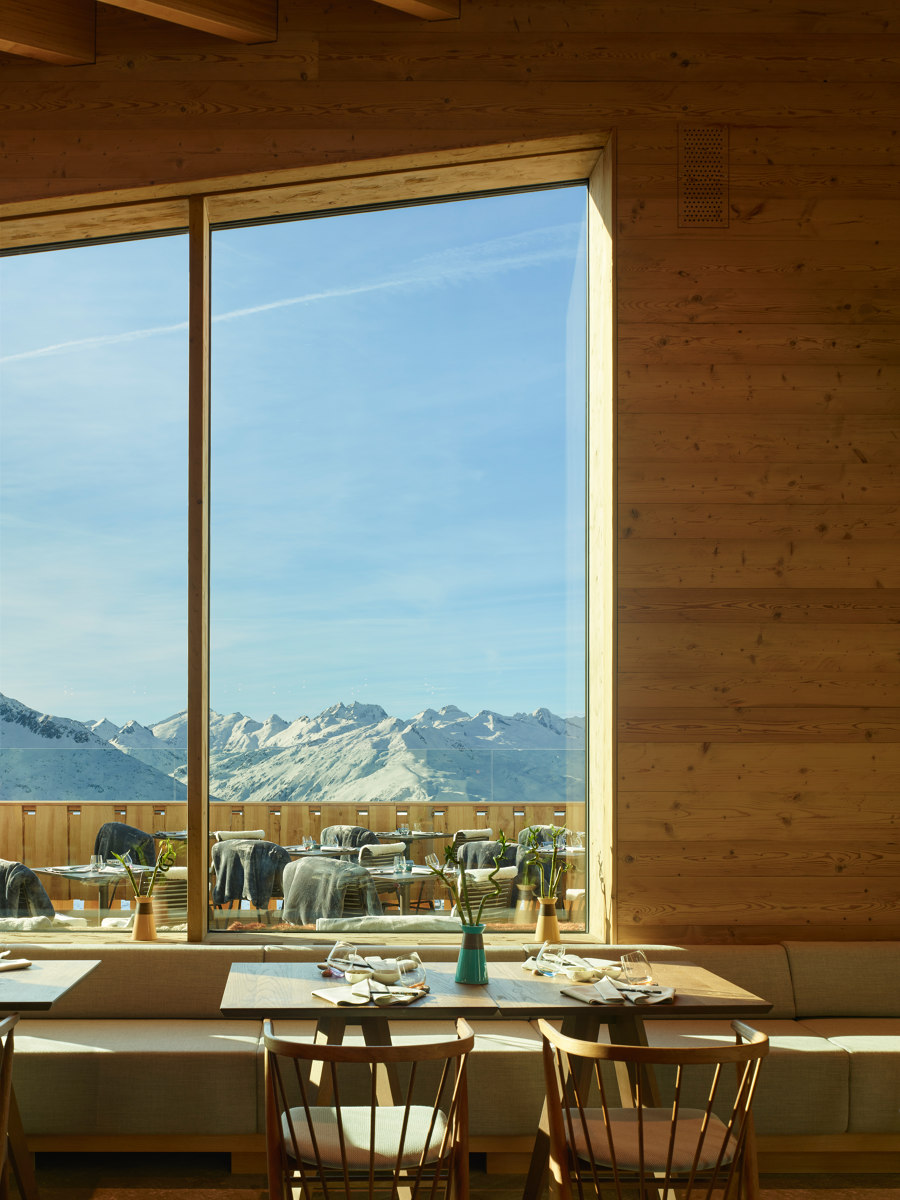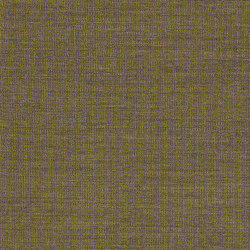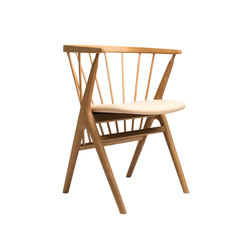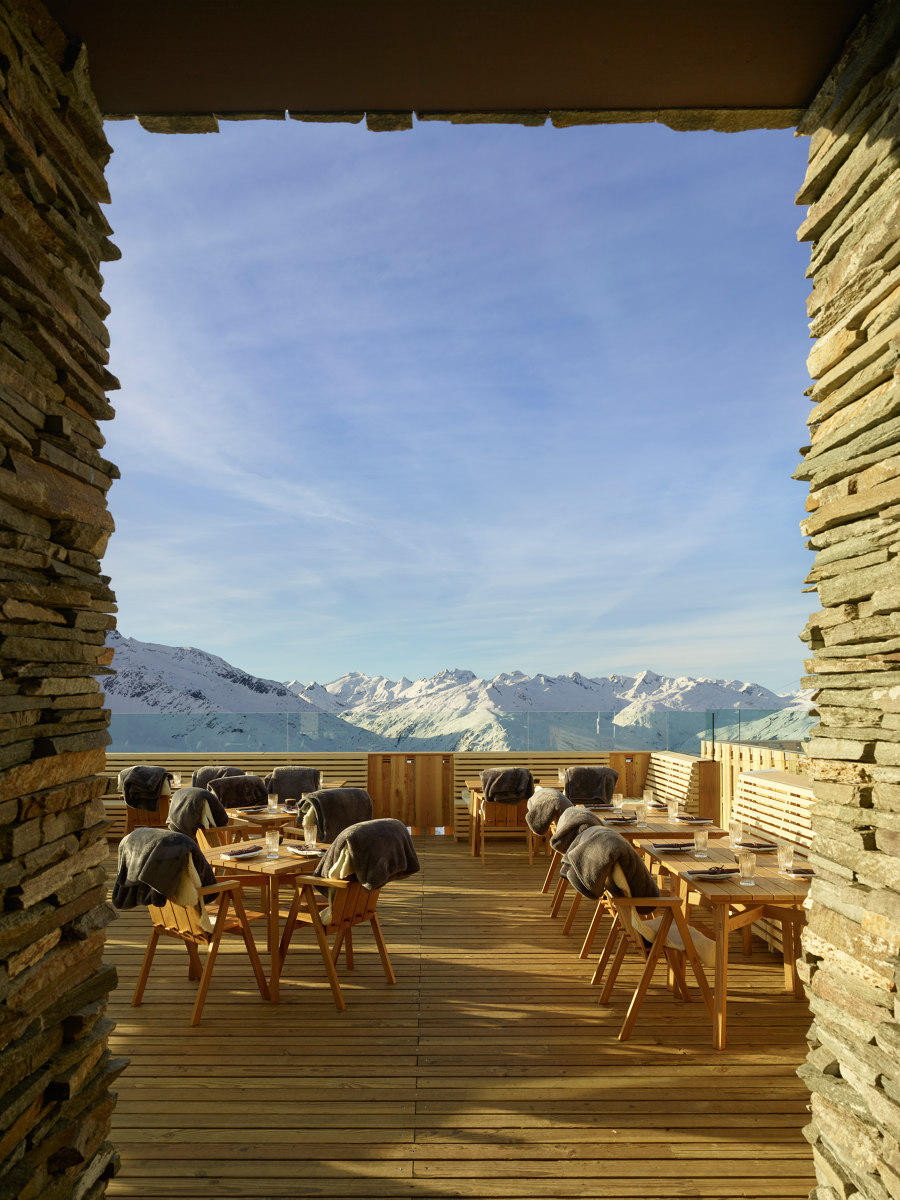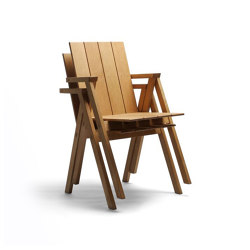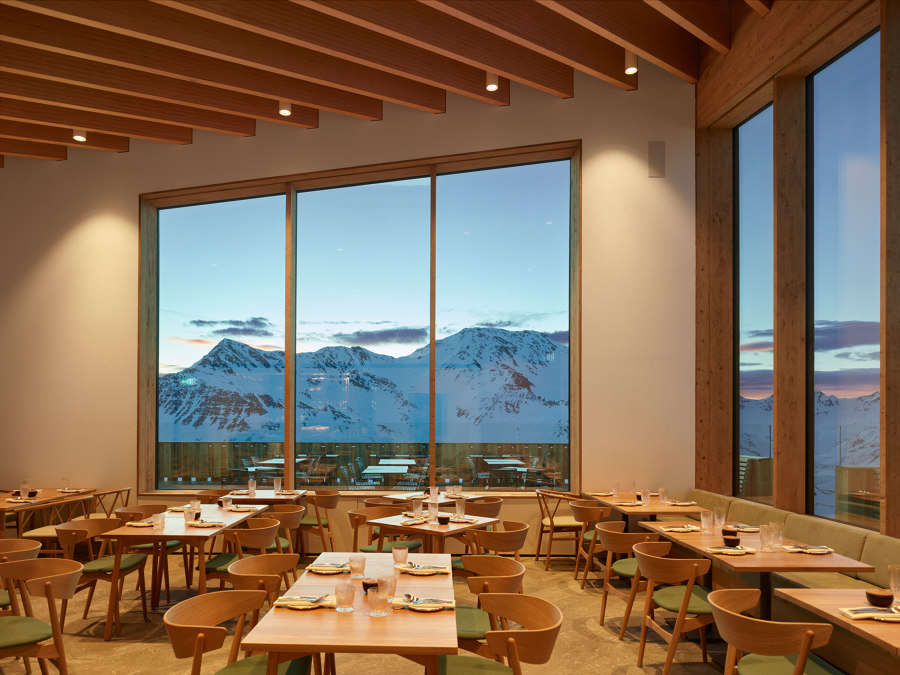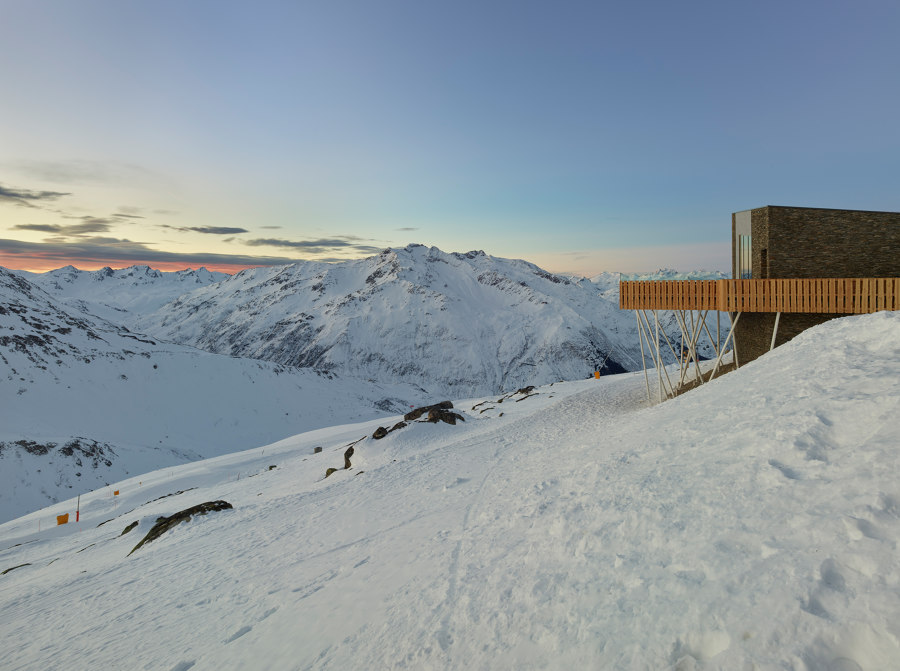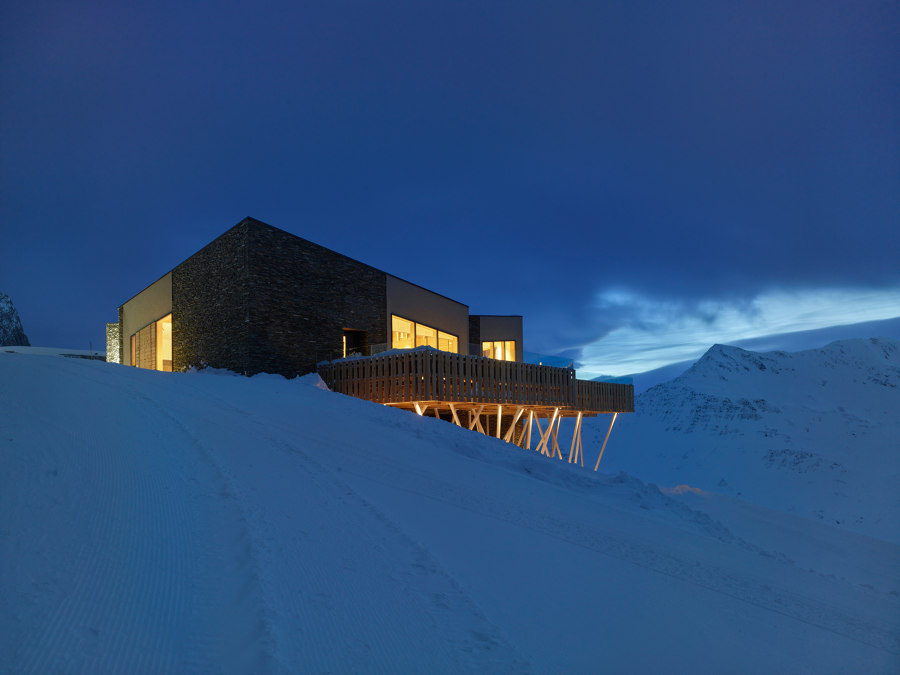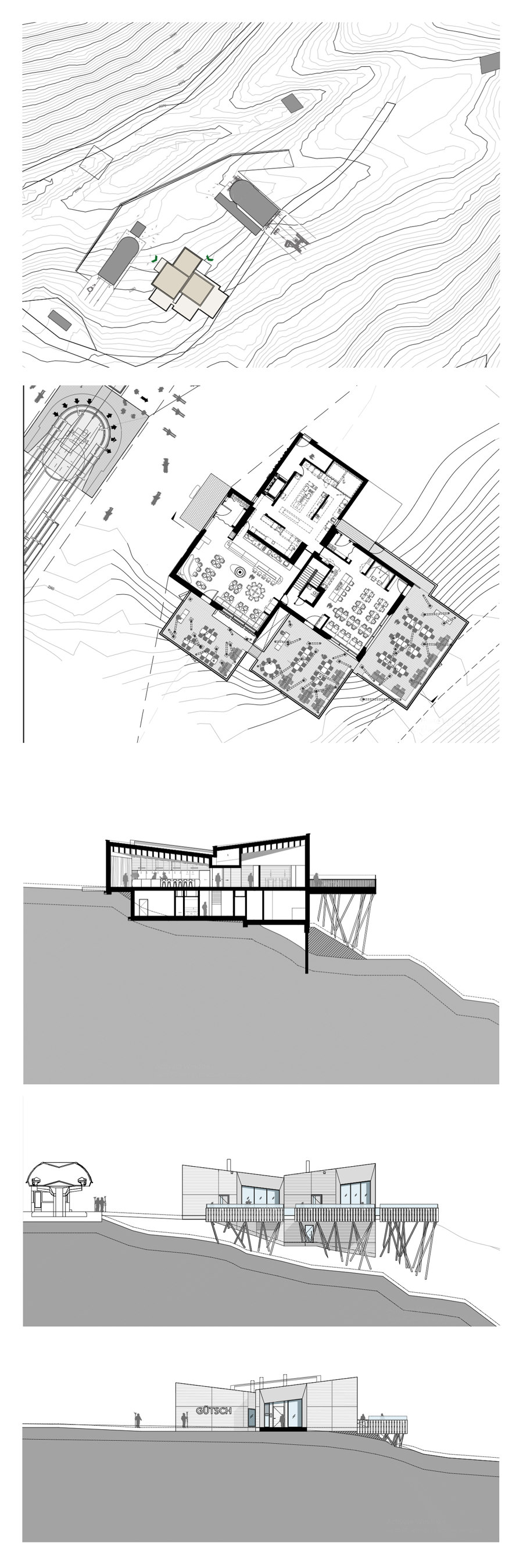The new restaurant building is at the heart of the developing Andermatt ski region in the Swiss Alps with a total capacity of 110 indoor and 190 outside terrace seats. Situated atop of the mountain at the interchange of two cable car lines, the building site is at an altitude of 2340m above sea level. It houses two first-class gourmet restaurants attracting both daytime skiers and dinner guests from the valley-based Grand Hotels.
Inspiration оf Form
The idea is to create a moment of inspiration by capturing the atmosphere and awesomeness of the altitude as in Caspar David Friedrich’s 1818’s painting, “Wanderer above the sea of fog”.
The mass studies took inspiration from the carved stone sculpture, ‘Horta de Ebro’ by Manolo Valdez and ‘Hameau’ vernacular Swiss Alpine villages; where several pitched roof houses sit against one another to form a cluster of stone walls and roofs nestled in a mountainous landscape.
The restaurant is made up of several pitched volumes sloping upwards with large windows opening up to the views beyond. It caters both for the aesthetic and the climatic challenges of a unique site and wide openings offer panoramic views over the valley of Andermatt.
The large balconies were attached to the anchoring stone volumes, creating a sense of lightness, as if floating over the landscape and the panoramic views. The idea was to create the same sensation of awe and excitement one gets when reaching the peak of a climb.
Construction Challenges
Due to the extreme weather conditions in winter, there is only a short timeframe in summer that allows for construction. This is in part due to the closure of the road in winter which provides site access for delivery trucks. For this reason, the building is designed to be constructed in two Summer Seasons. In Summer 2018 the basement concrete structure was poured allowing for a speedier construction of the prefabricated timber walls and beams above ground in 2019.
The exterior façade is clad in stone, resembling the vernacular architecture of the area, with exposed timber beams and timber-panelled walls on the interior. A feature stone fireplace and sushi bar in the Japanese restaurant further tie the project back to the surrounding environment.
The logistics of designing a restaurant in such an isolated location have also had an impact on the design. Therefore, the need for large storage areas for non-perishable goods were designed due to the inaccessibility of the site for the delivery of goods during winter. In winter, only fresh goods will be delivered via cable car and then transported via ski-mobile to the restaurant.
Spatial Distribution
The challenge of this project was to create a design that caters for both client groups, developing two separate restaurants under the same roof: The Japanese by The Chedi Andermatt and The Gütsch by Markus Neff. The building creates a landmark that is as robust as the dramatic setting of the landscape.
The restaurant is split into three volumes, each with their own use; the Japanese restaurant, the Gütsch restaurant and the kitchen, with the amenity spaces and storage, tucked into the basement level below. The solid stone volumes anchor into the ground, thus overcoming the steepness of the site and allowing a ribbon of timber terraces on steel columns to hover in front.
The roof structure is unique to each volume and follows the diagonal slope of the buildings. A series of beams span the entirety of each volume and define the characteristic of each dining room. The ancillary spaces are a maximum of 3m in height to allow for the beams to soar past and complete the volume.
The windows guarantee a constant view from the restaurant to the mountainous horizon. The viewpoint of the guest is always veered towards the outdoors and the size of the windows enable a blurring of the internal dining space and the external landscape.
The large terraces enable the capacity of the restaurant to increase on sunny days, with the potential for Après Ski. Late-night dinner guests will have the opportunity to come from their hotels via the cable car following the closure of the ski slopes to enjoy the isolated setting.
Materiality
The base of the building consists of concrete foundations and base, with a prefabricated CNC timber structure on top allowing the building to be constructed in two seasons. The building is then clad in natural stone, in the language of the typical swiss ‘Hameau’ at high altitude.
The use of stone at higher altitude is to deal with excessive wind, frost, ice and snow which required a building material of strength and natural aging. We surveyed the local stone masonry walls built by the army over the years and wanted to adopt the same language, of a material sourced from the site, as if it was always meant to be there.
The balconies are purposefully made of a lighter timber material, to give it the sense of lightness and detachment from the main structure. The large panoramic windows have large bold frames, as if these were sculpted of the stone mass.
On the interior, a combination of steamed and roughened pine wood panelling and plasterboard is used. The ceiling consists of glulam beams, which can take the high live loads of snow accumulation during the winter months. The bar of the Japanese consists of a reconstructed stone sculpture, giving it an appearance of massiveness. In contrast, the white steel chimney hangs lightly from the ceiling. In the Gourmet, the bar is made of a colourful terrazzo, giving it its distinct identity.
Design Team:
Studio Seilern Architects: Christina Seilern, Hana Potisk, Portia Malik and Jonathan Wrynne
Local Architect: Siebzehn13 Architekten AG
Structural Engineering: Holzprojekt + IUB Engineering
Services Engineering: Qundqpunkt
Electrical Engineering: EWA
Building Physics Consultant: MEP
Fire Consultant: Holzprojekt
Lighting Design: Viabizzuno
Kitchen Planner: Alig Grossküchen
Client: Andermatt Sedrun Sportsbahnen AG
